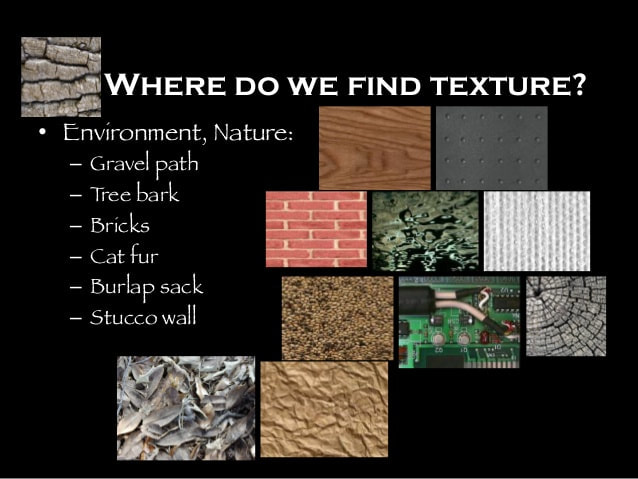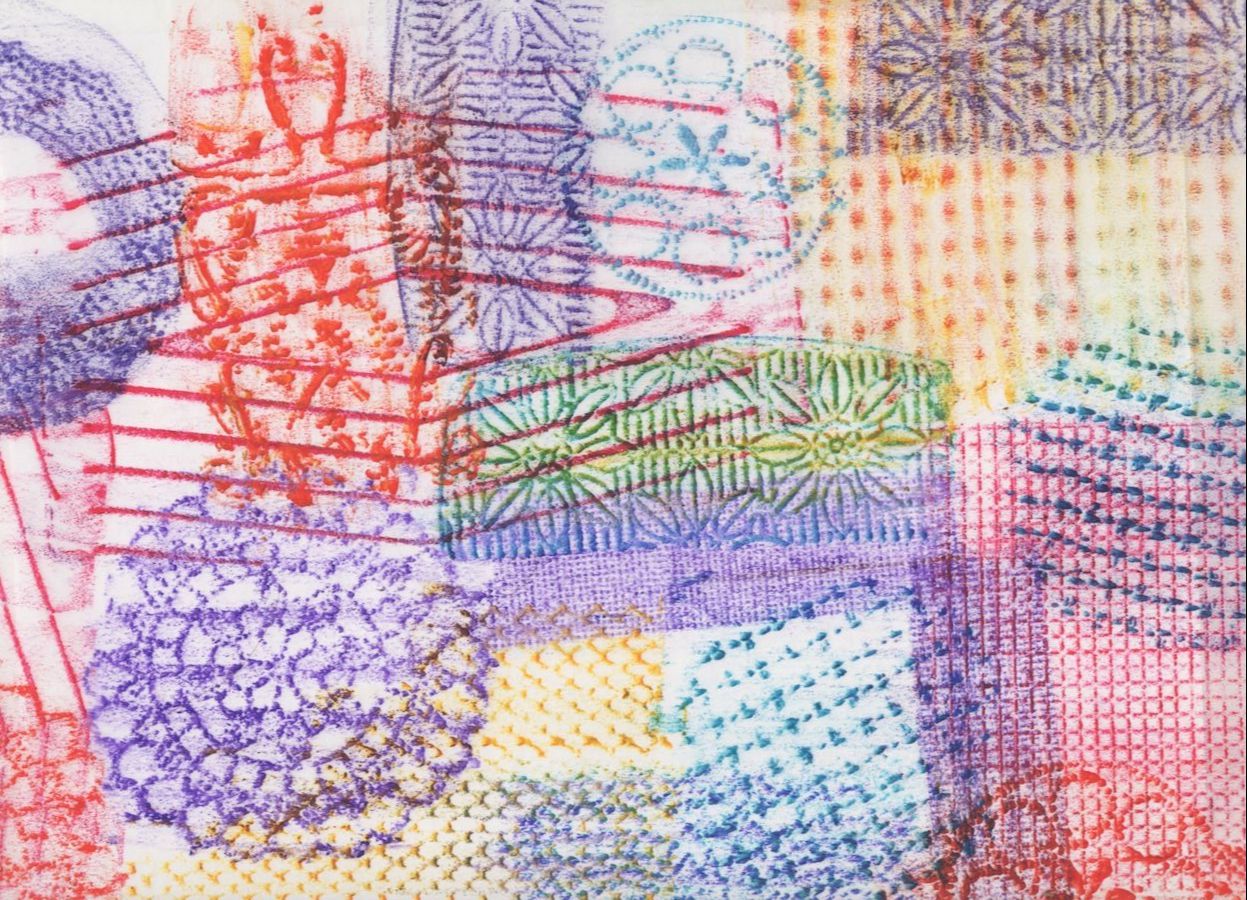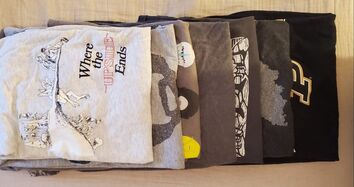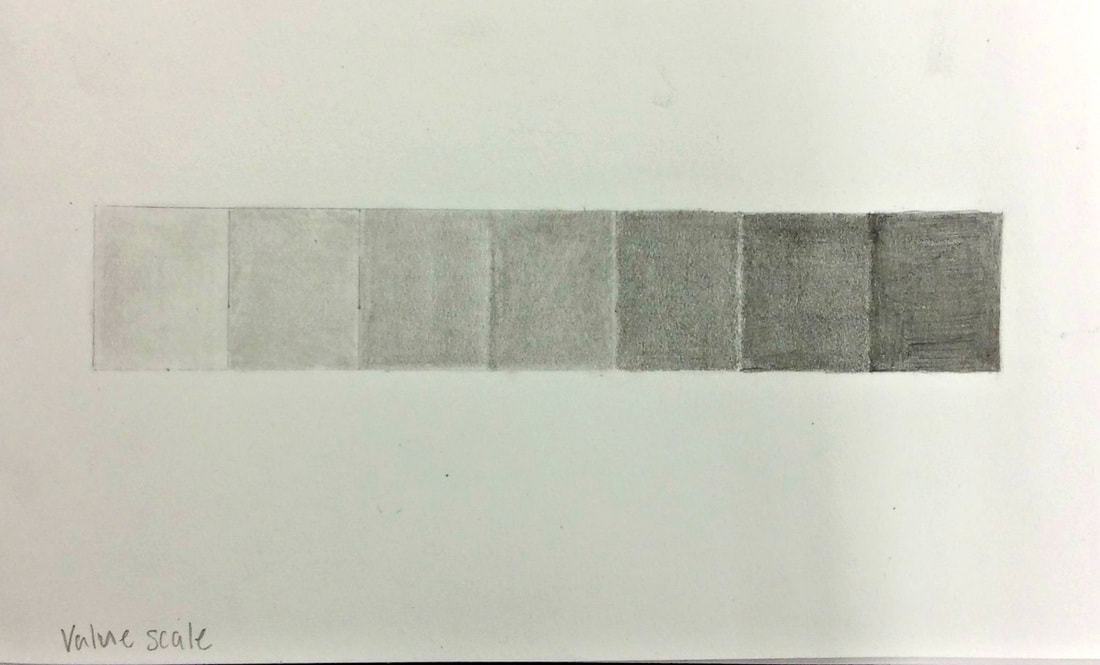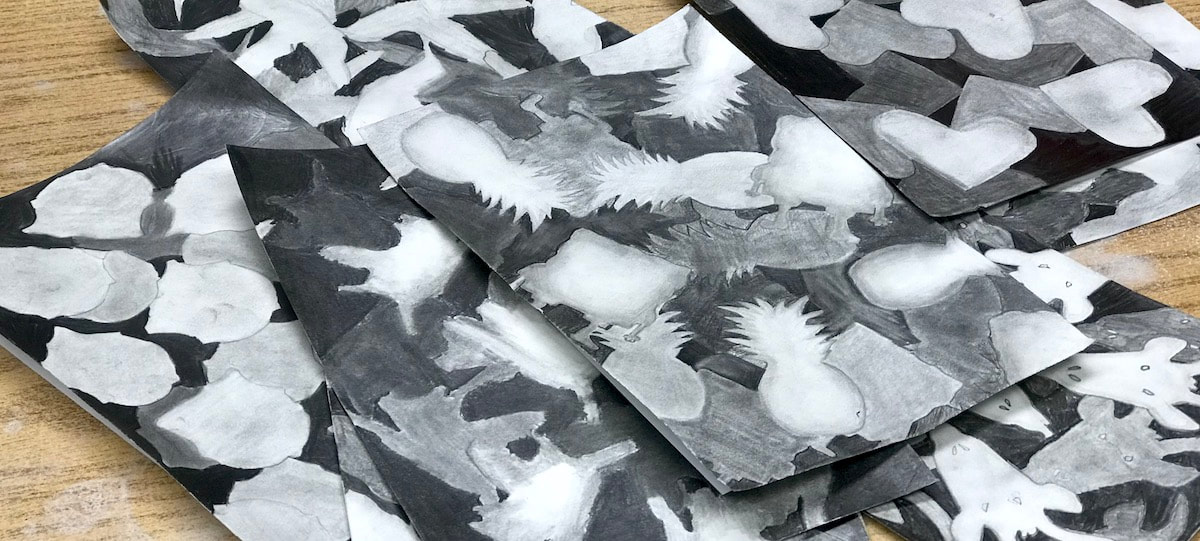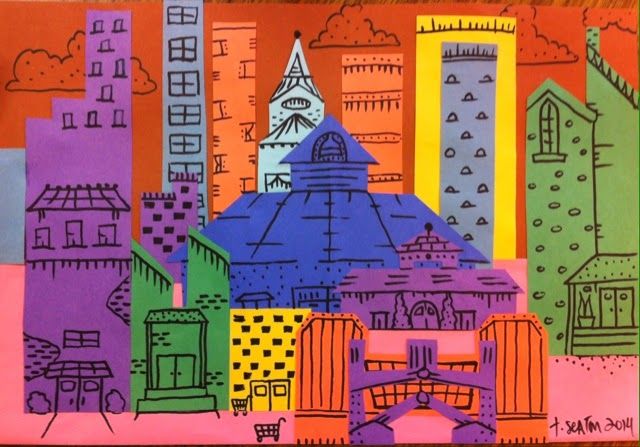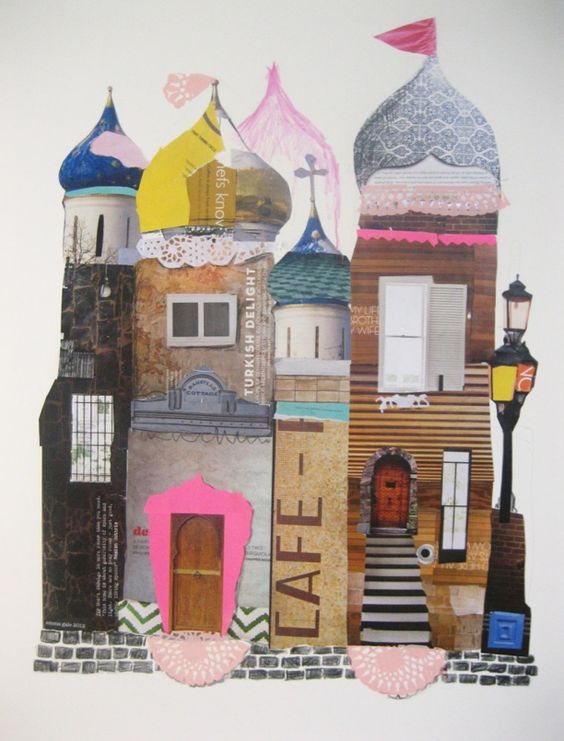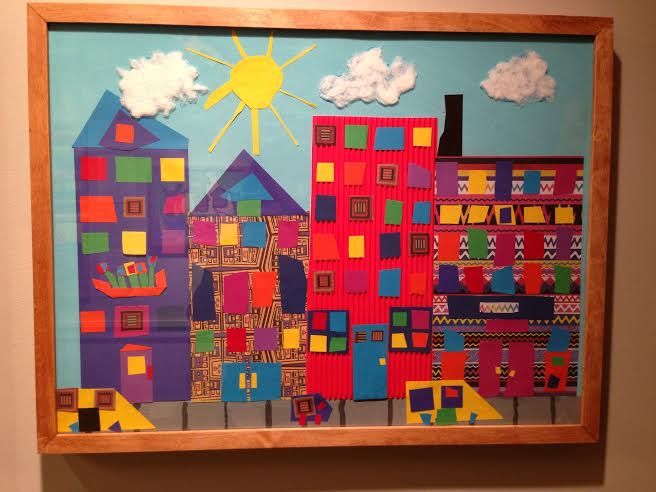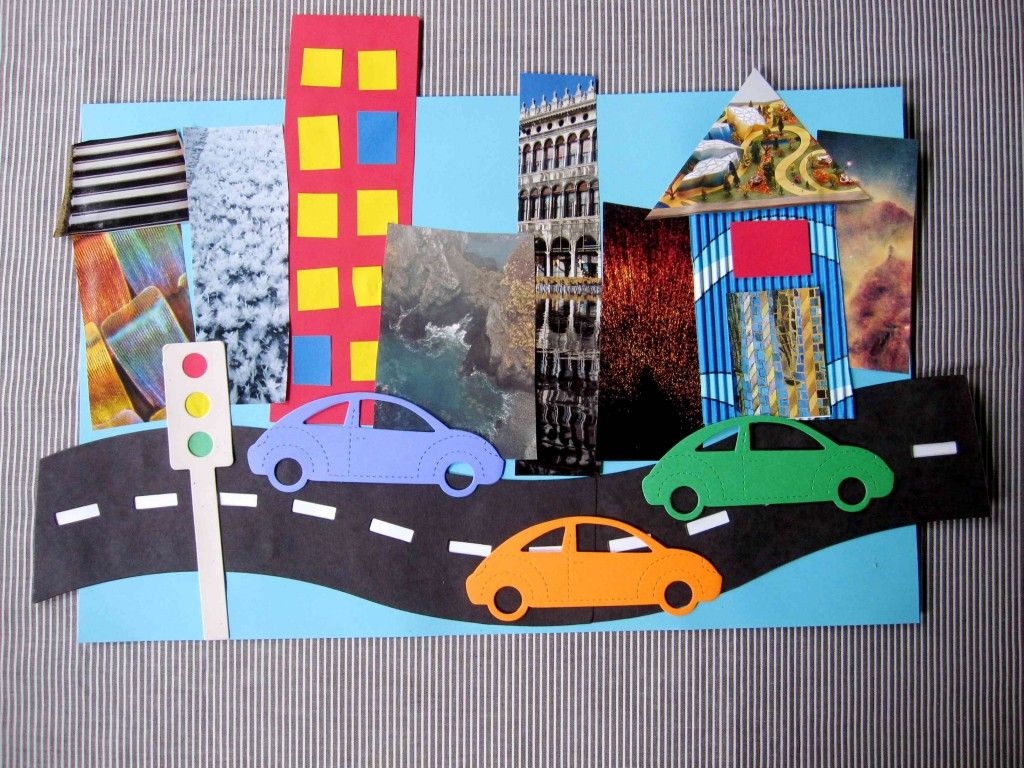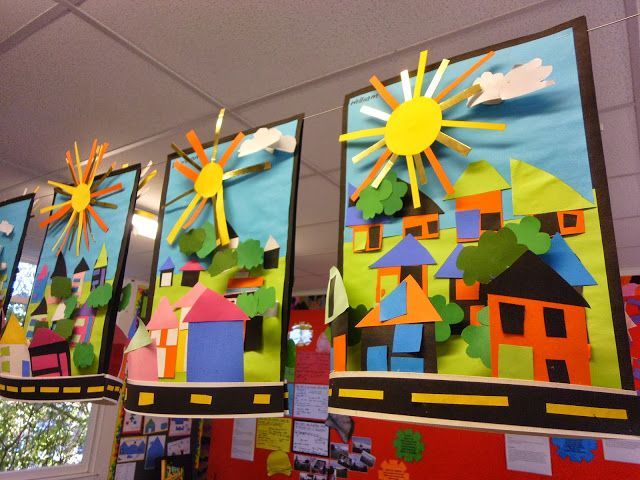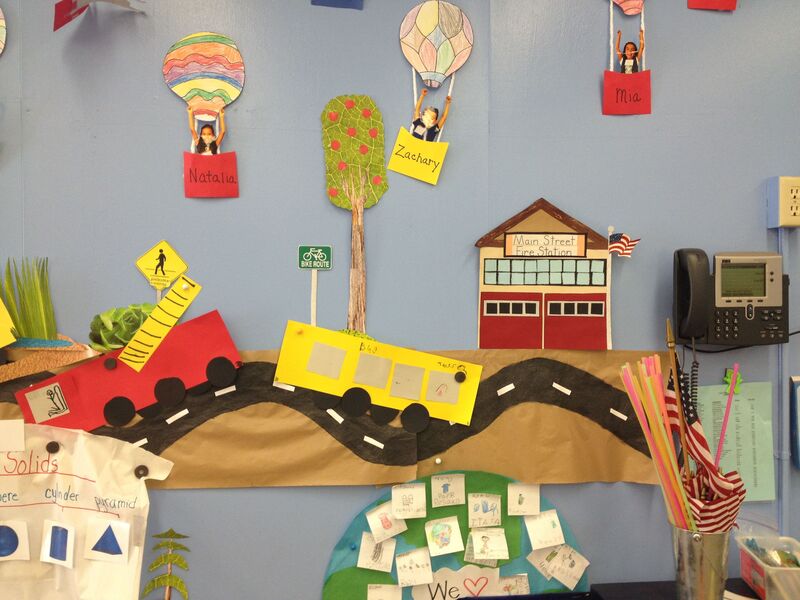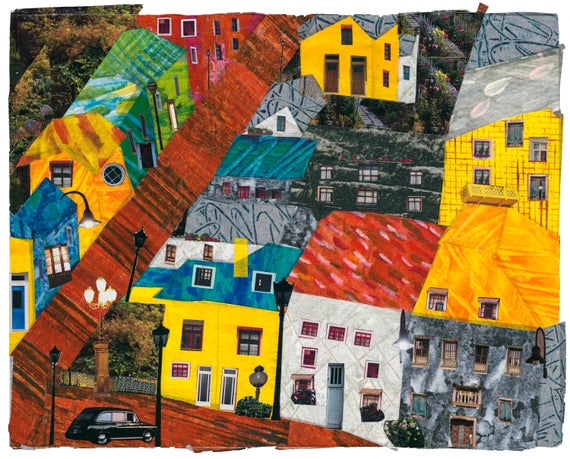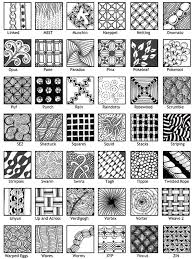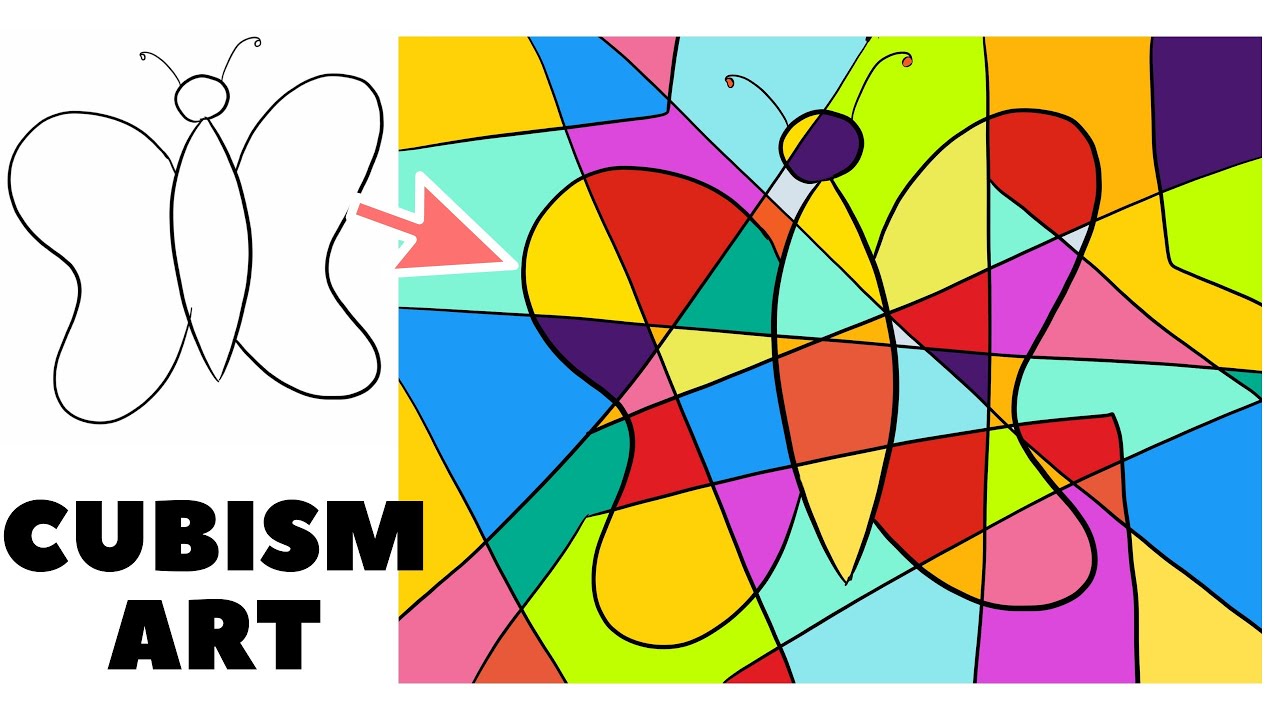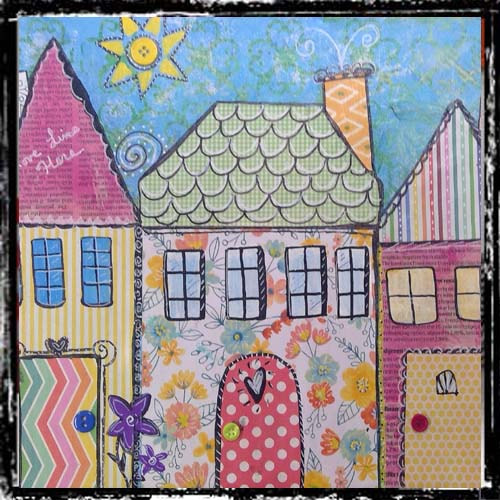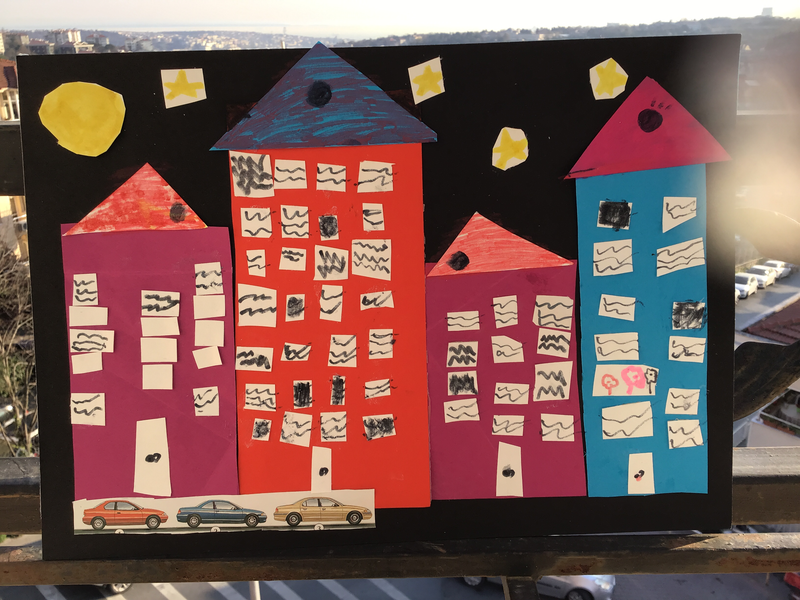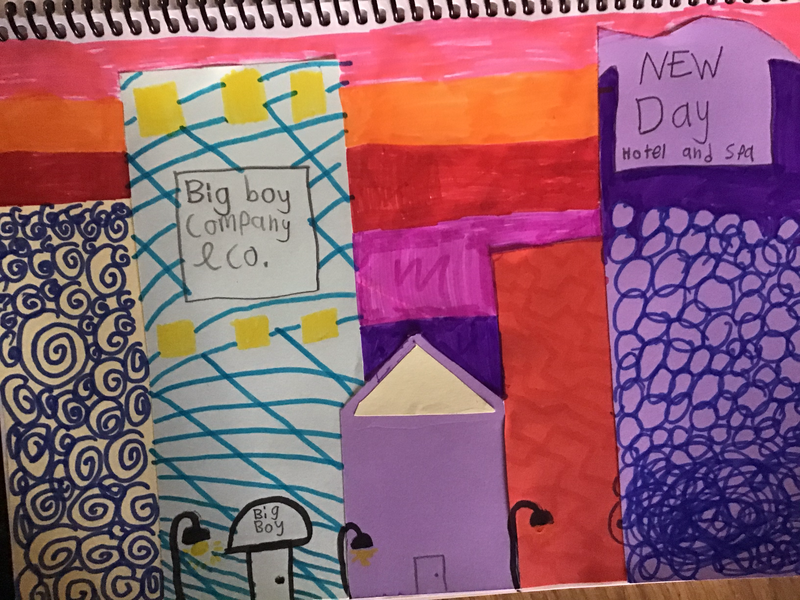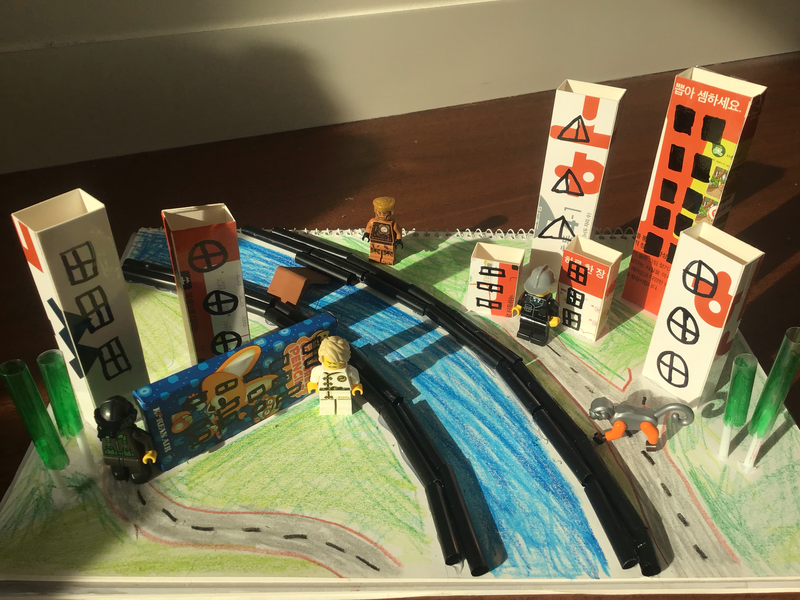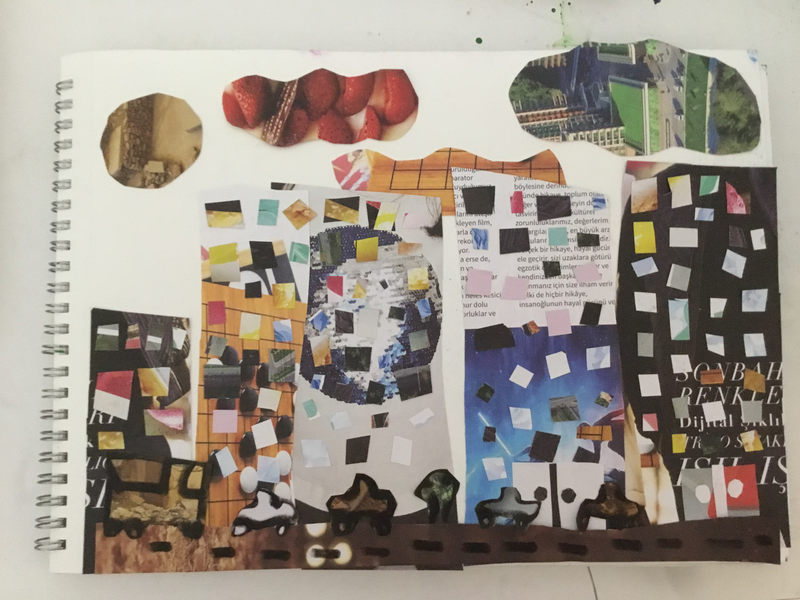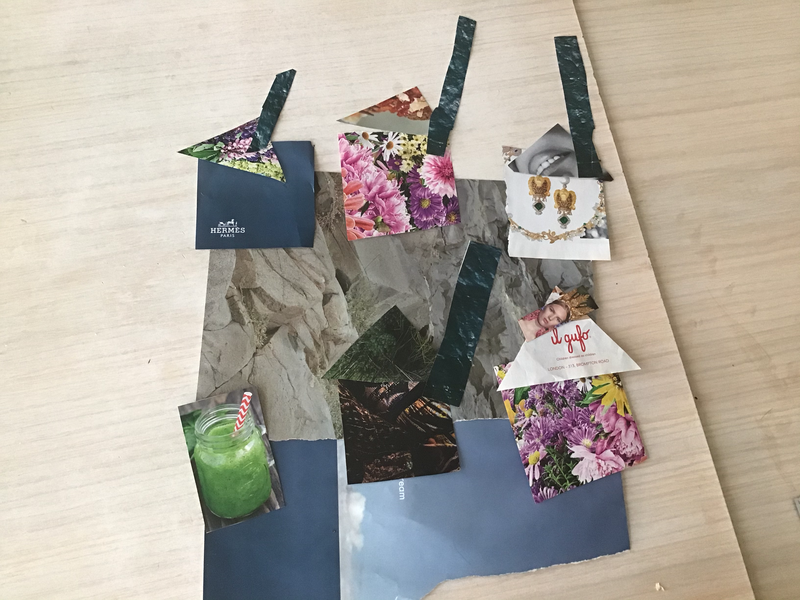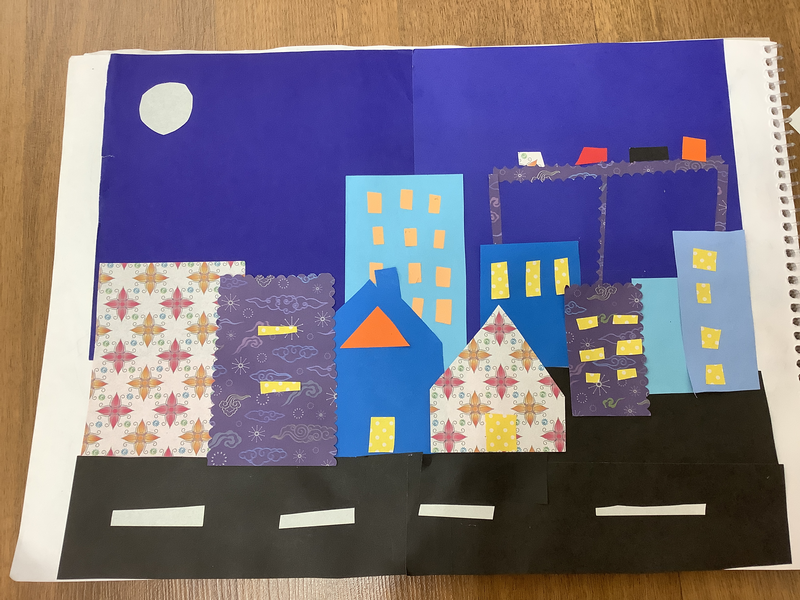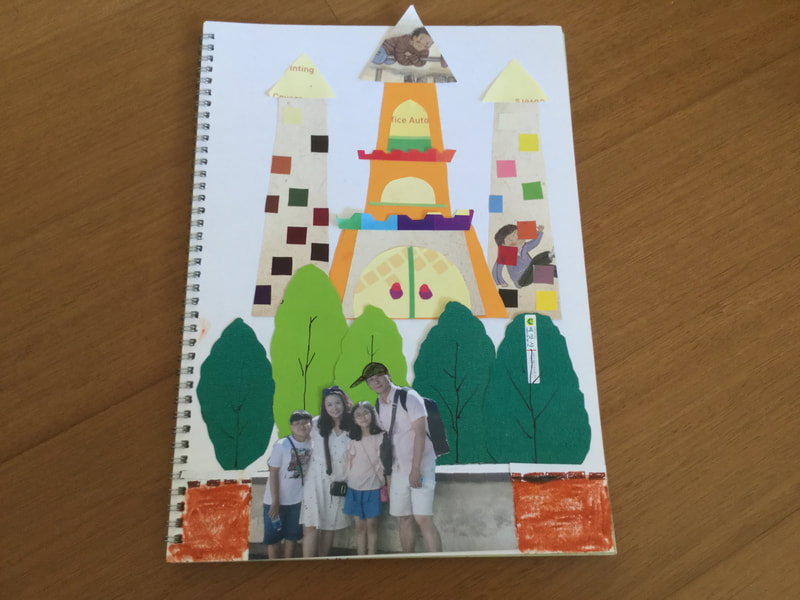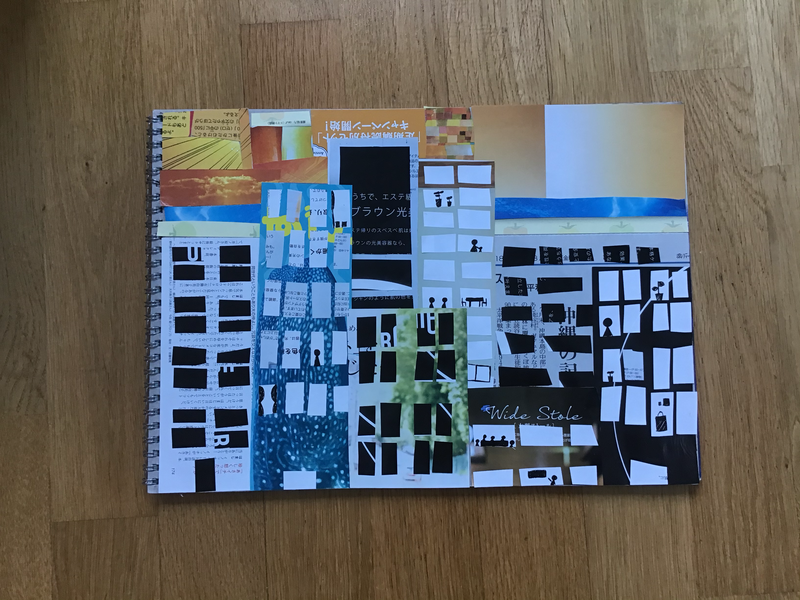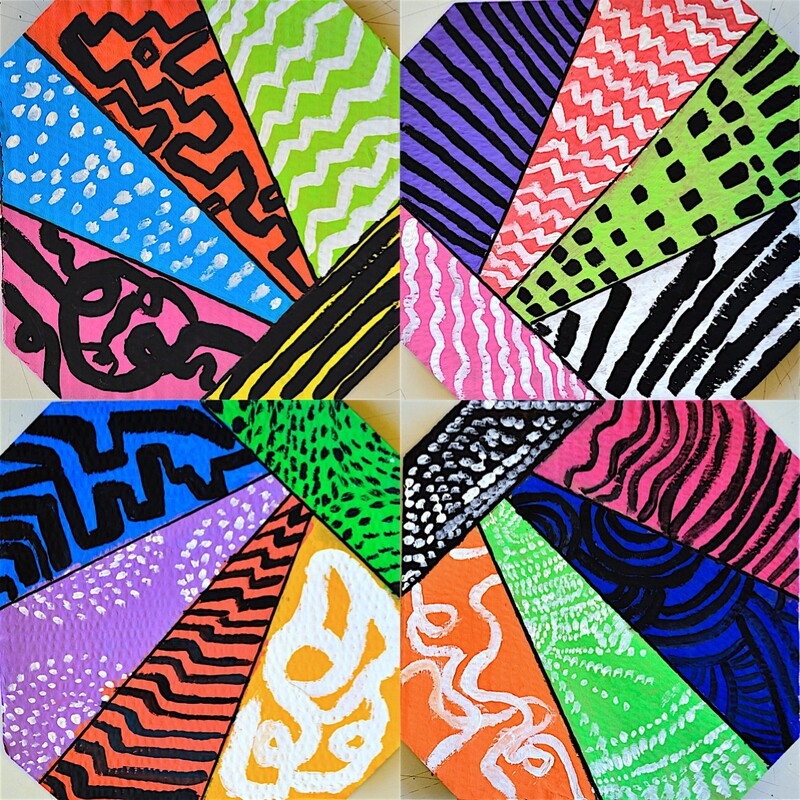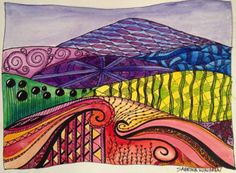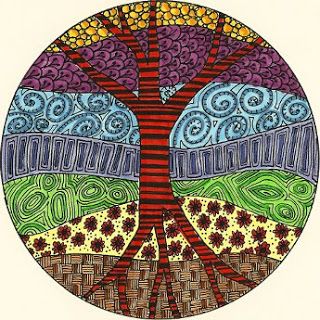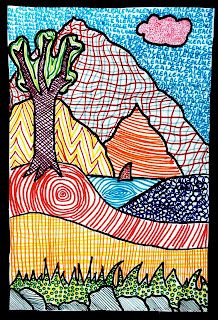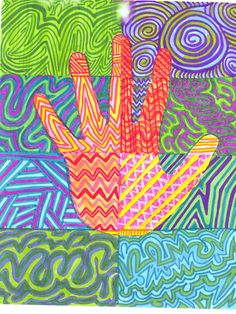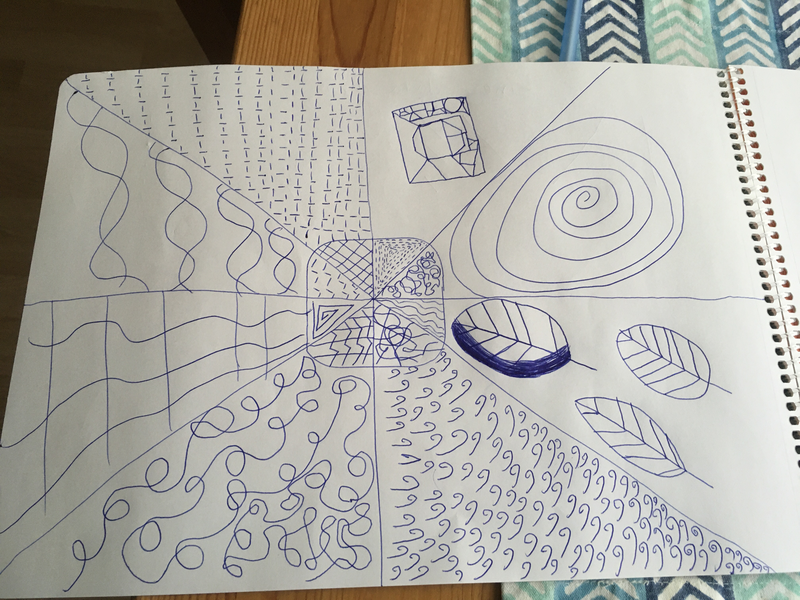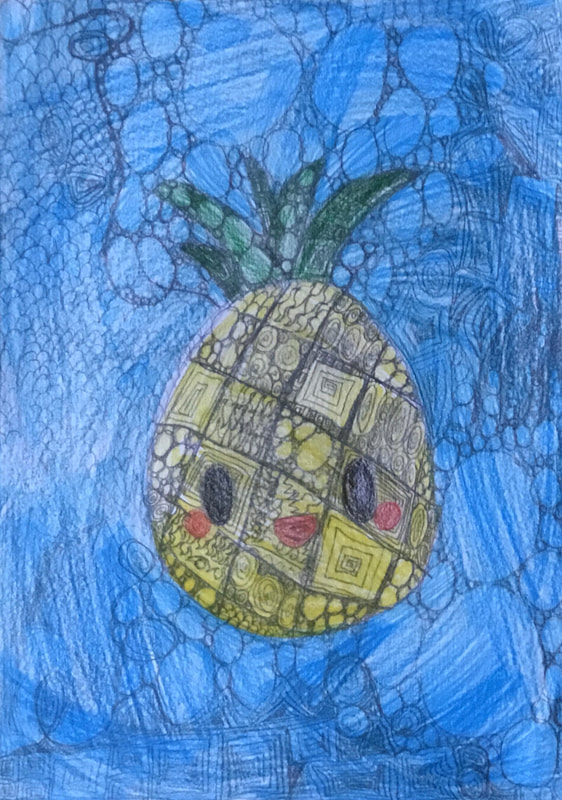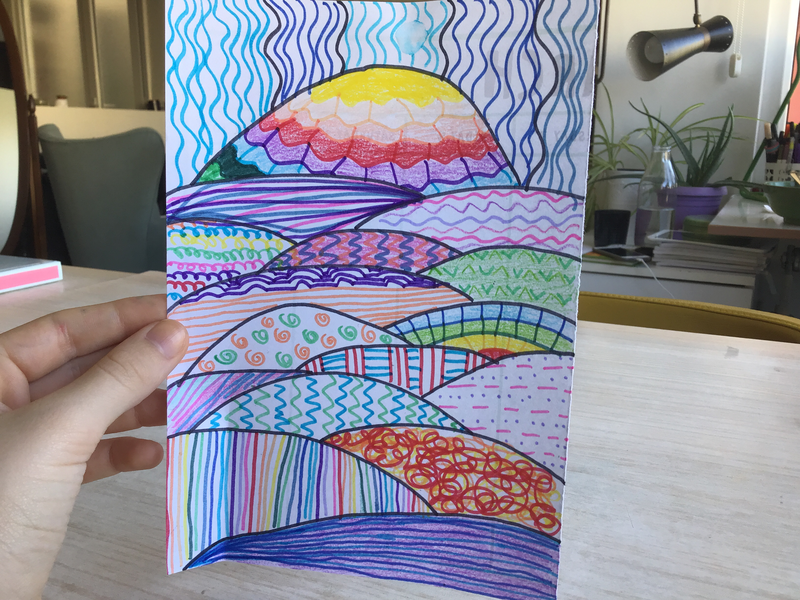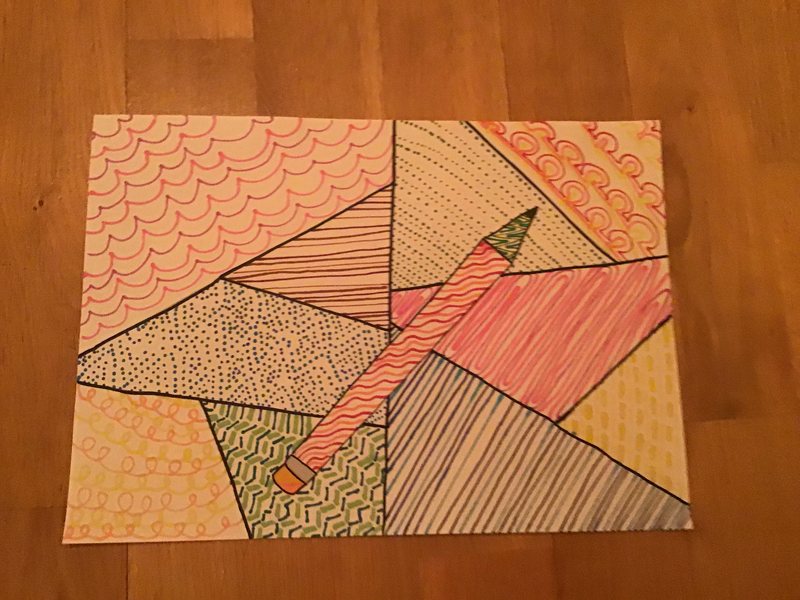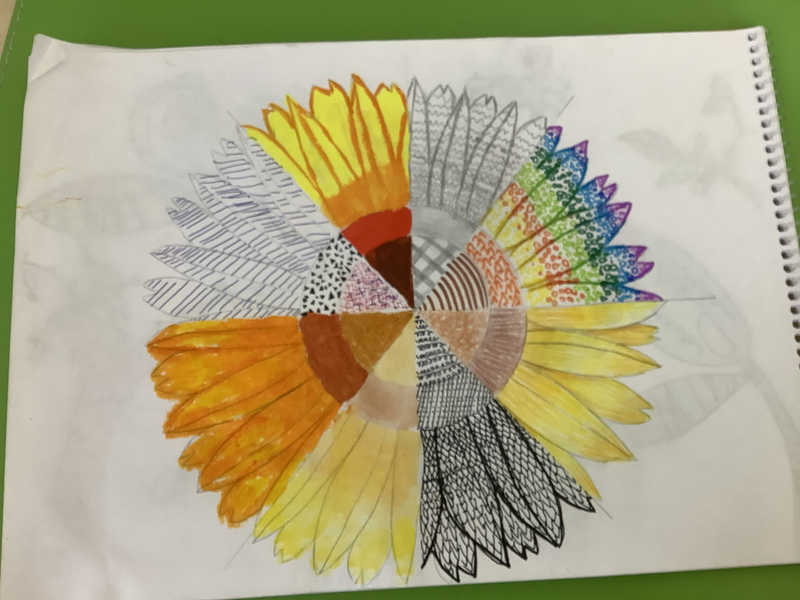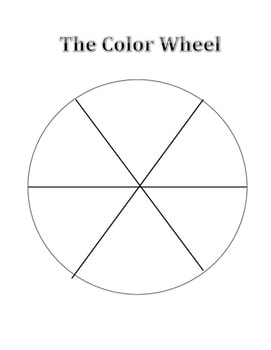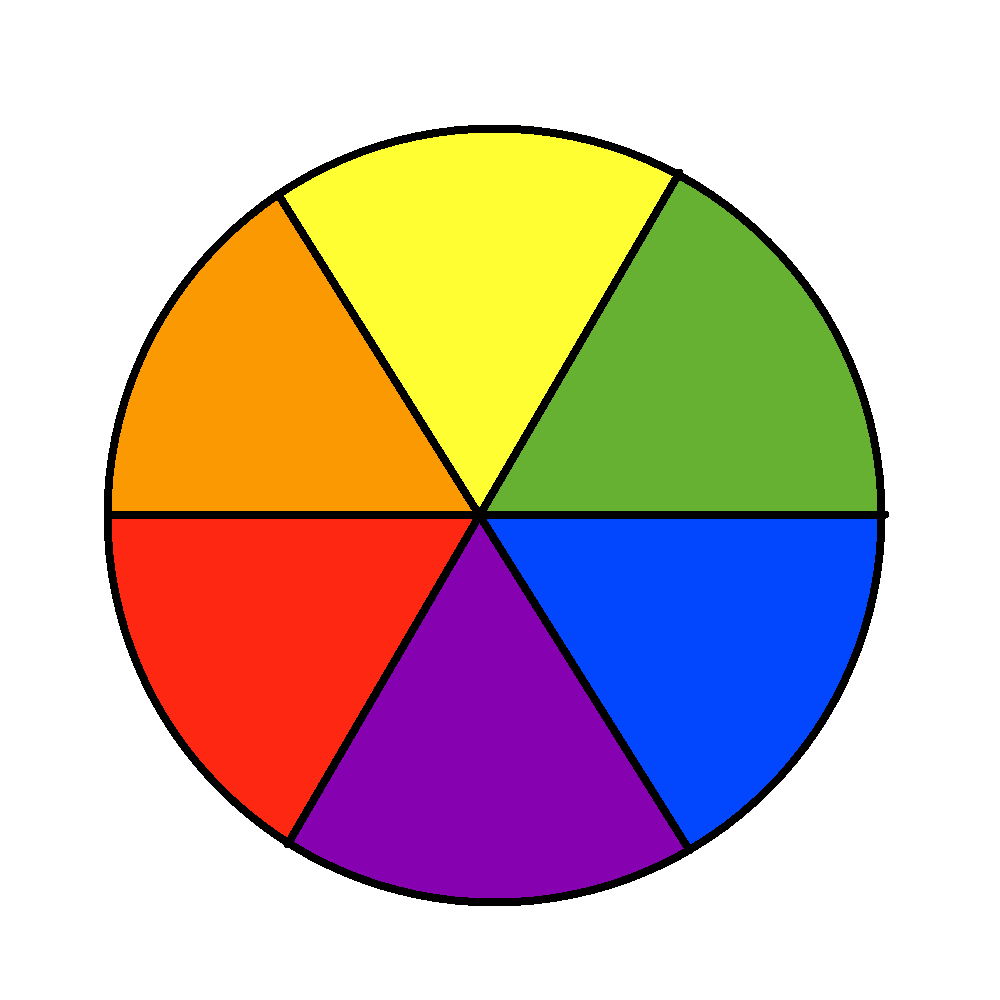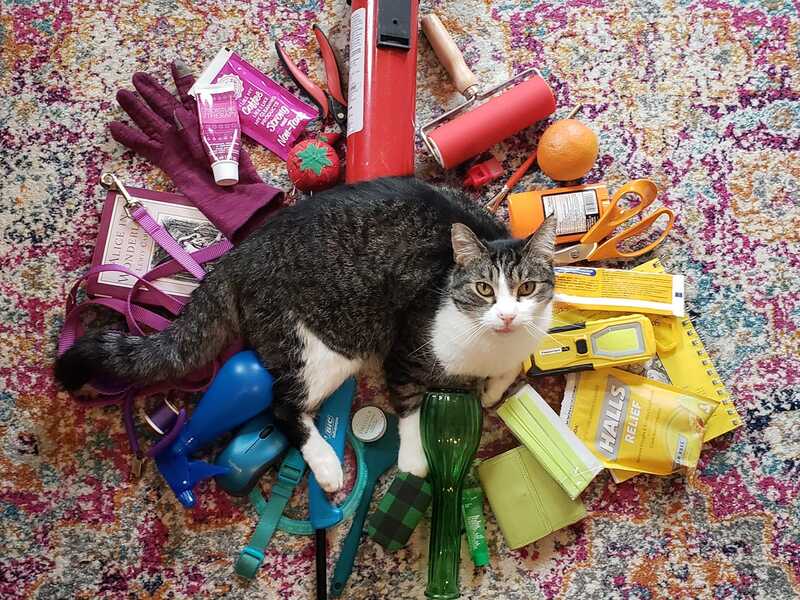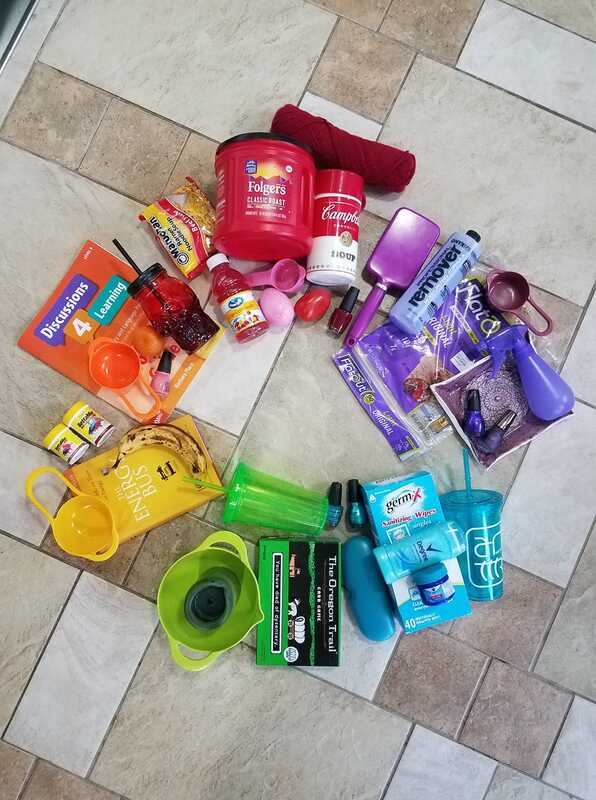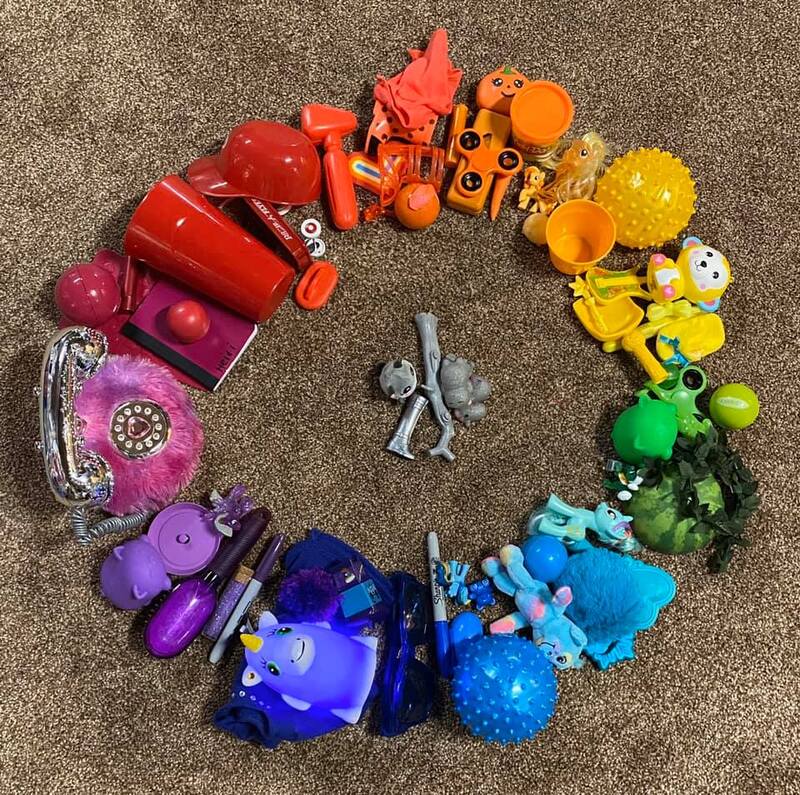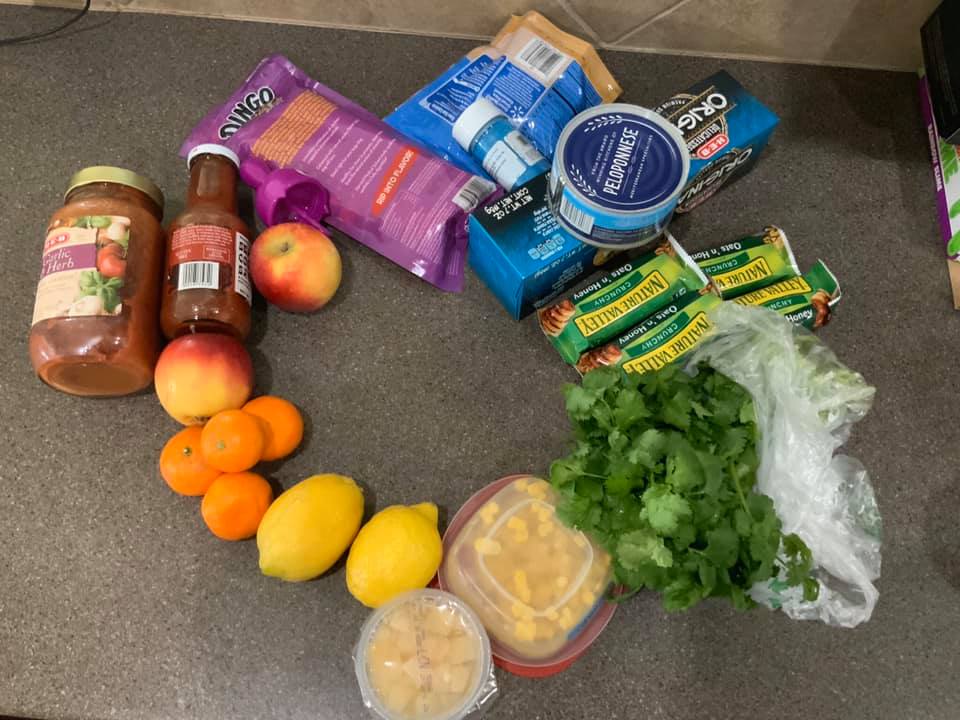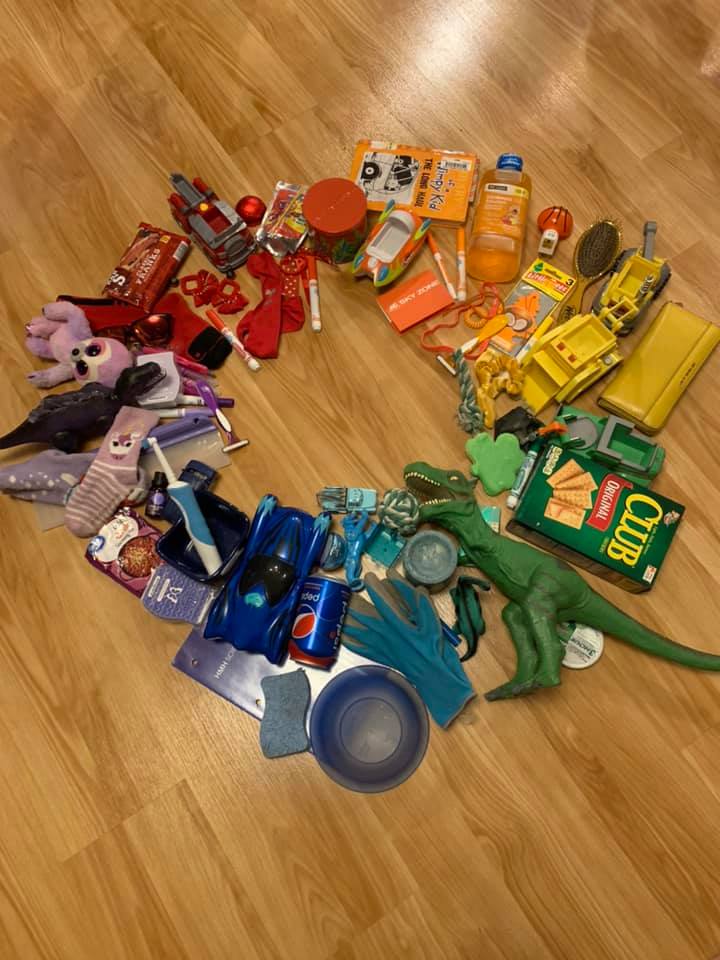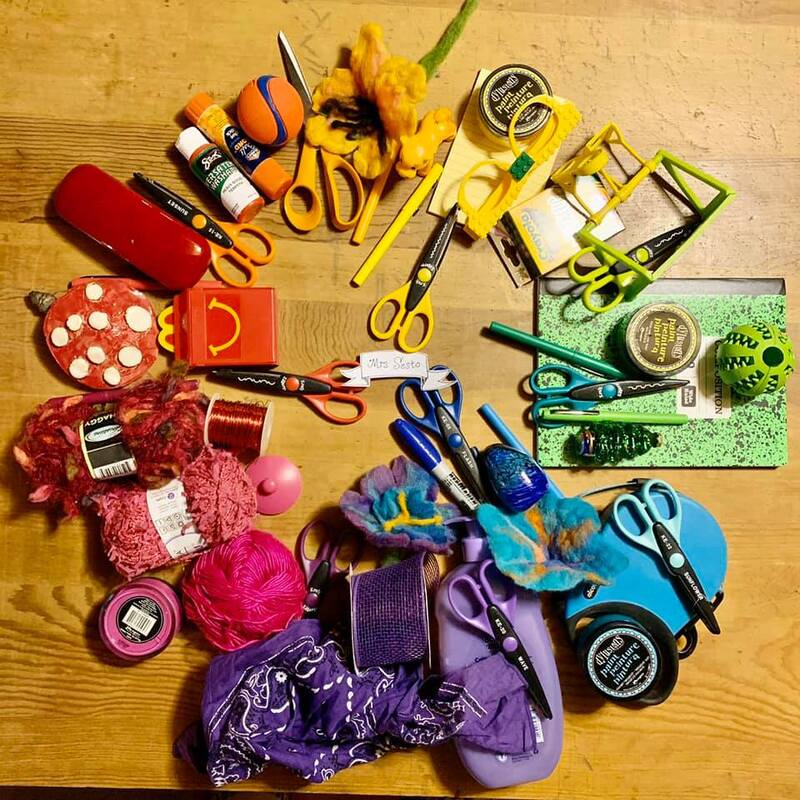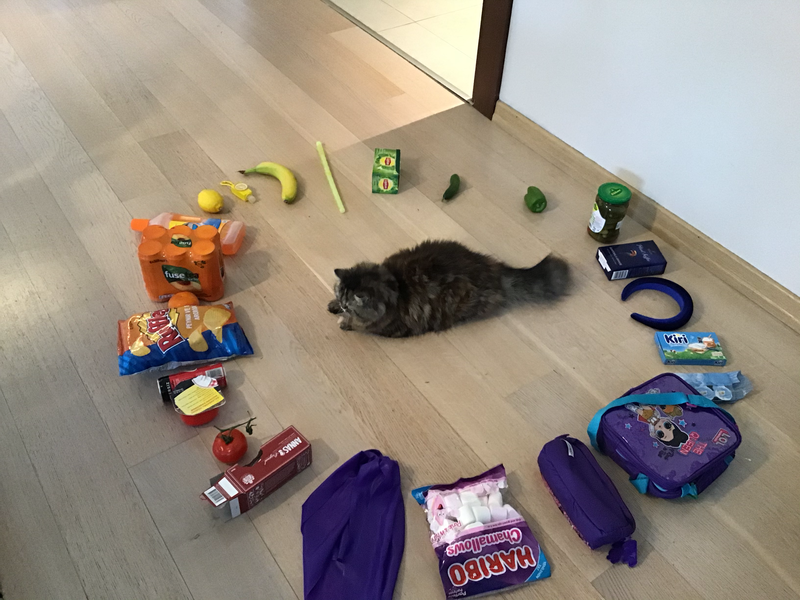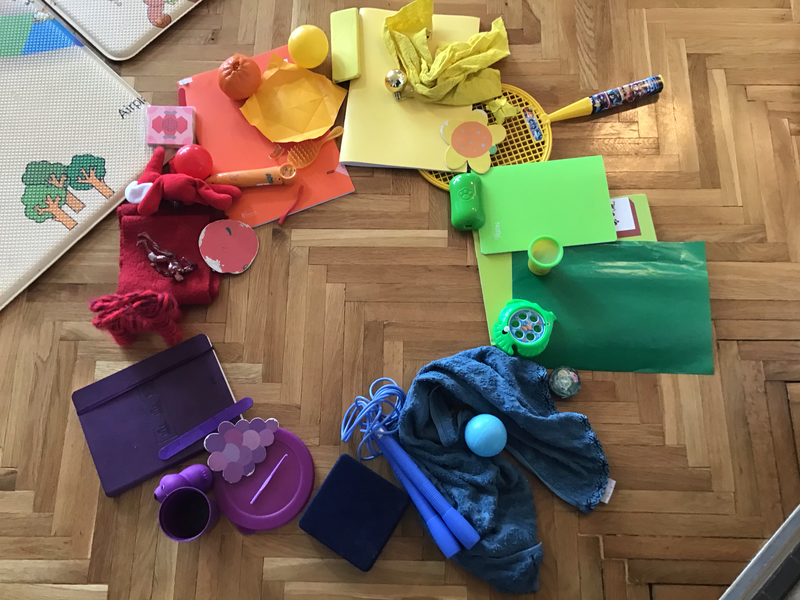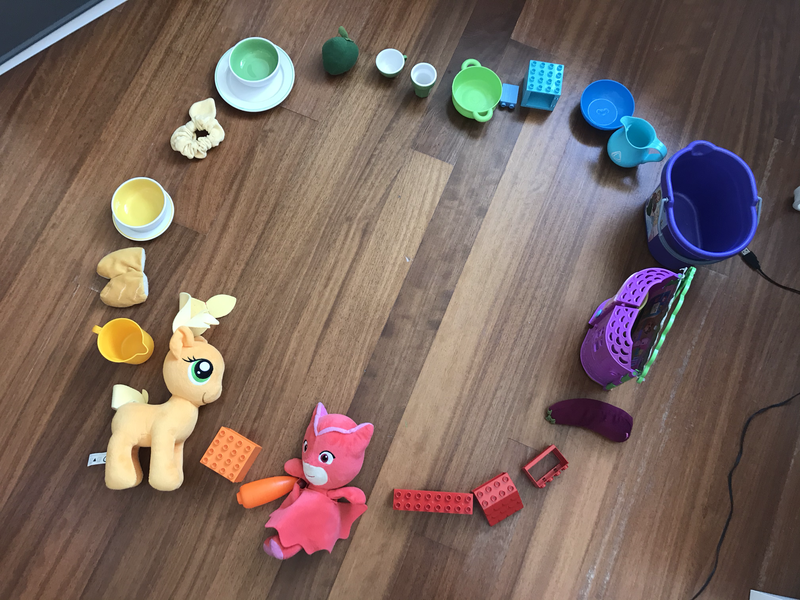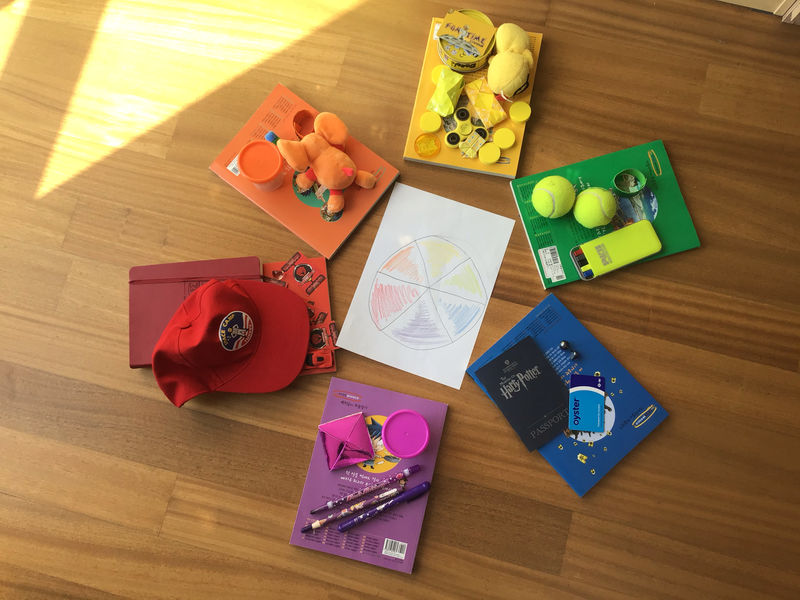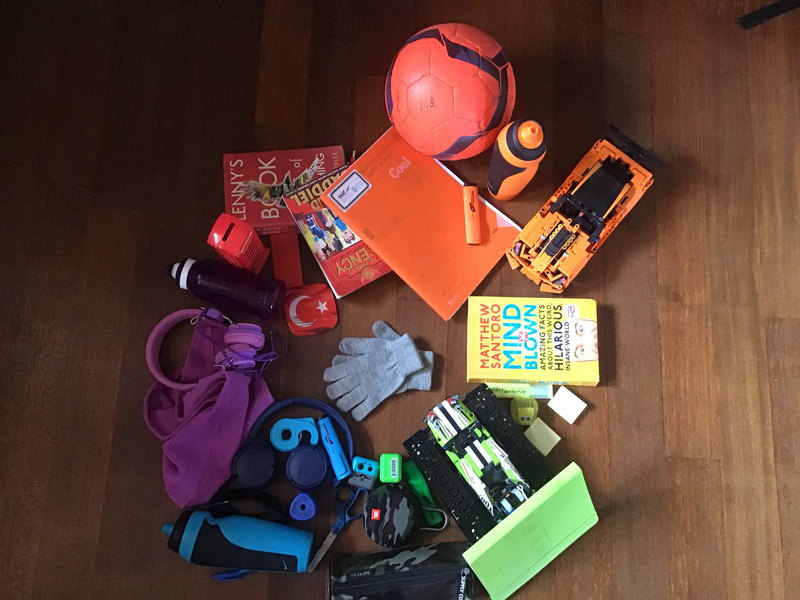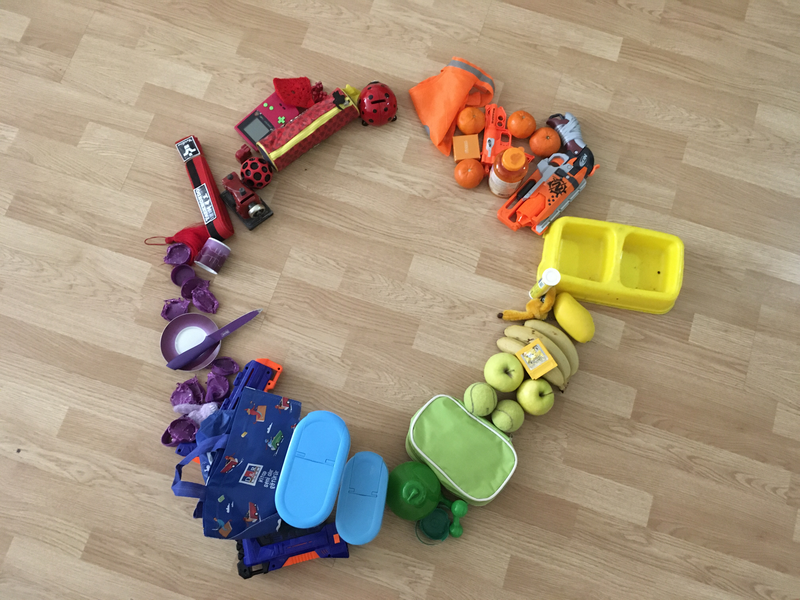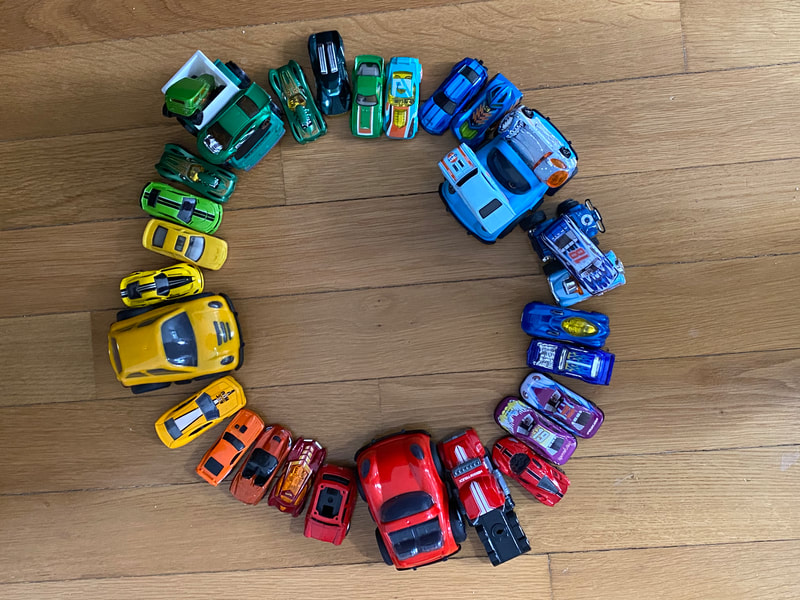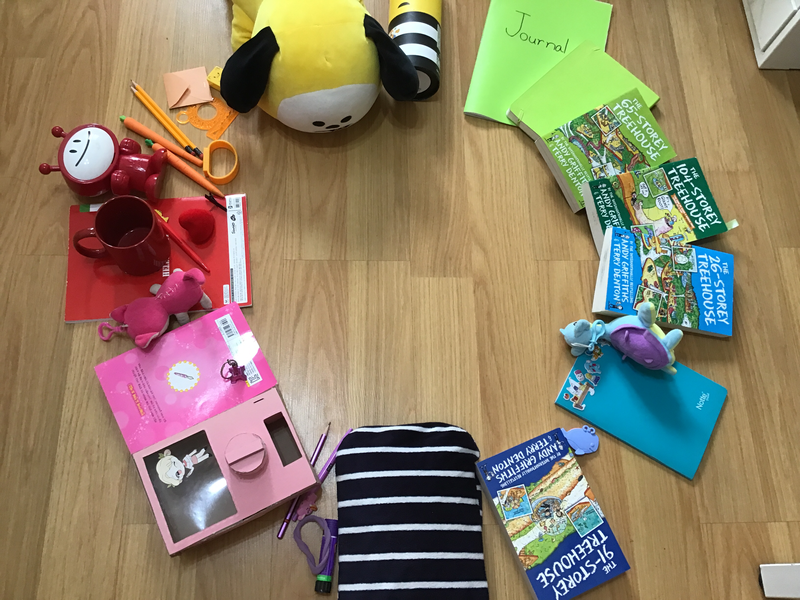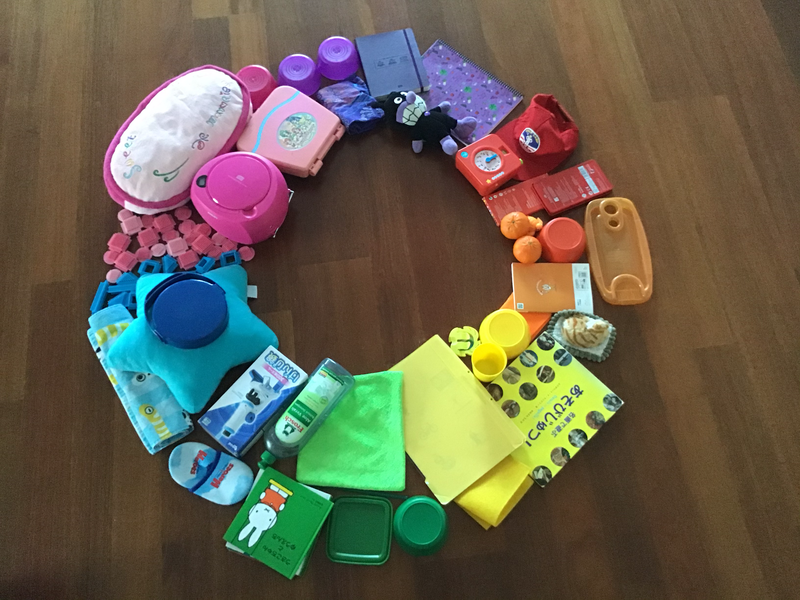5th Grade - Elements of Art
IntroductionThe Elements of Art are important pieces that make up every artwork. Through the next few weeks we will be learning about each of the seven Elements and exploring how we can use them to make our art better. Watch the video to the right for a short introduction:
|
|
Week 6: Texture
|
|
Warm-Up: Texture Photography Hunt
|
Using your iPad, look around your house for things with interesting textures. Take a photo of the textures you find. You may want to move the object into good light (from a window) to show the texture better if you can. Crop the photo so you can only see the texture (not what the object is). Upload 3 photos of different textures.
|
In Class: Texture Rubbings
Week 5: Space
|
Space is an important element in every artist's tool kit. The illusion of space can be used to create realistic artwork. The physical space considered in depth while working with 3D sculptures. Watch the video about how artists use the element of space.
|
|
Warm Up: Notan PapercutWatch the video and create your own Notan papercut
Materials you will need: - Scissors - Small solid color paper (black would be great but any color will work) - Paper that is larger than the smaller solid piece - Glue |
|
In Class: 3D Shapes
|
In class this week we will learn about one-point perspective by creating 3D shapes in space.
|
|
Week Task: One-Point Perspective City
This week, try out creating a one-point perspective city using one of the videos below to guide you.
|
|
|
Week 4: Value
|
Value is the lightness or darkness of a color. Artist use value in their artwork to create the illusion of space as well as to make their artwork more interesting and unique. Learn more about Value by watching the video.
|
|
Warm-Up: Clothing Value Scale
During Meet Class Session
|
Create a value scale with a pencil using the following steps:
1. On a white paper, draw a long rectangle 2. Divide the rectangle into 7 different sections 3. With a pencil, color the section on the right as dark as possible 4. Continue coloring in the sections of the rectangle making each section lighter |
Weekly Task: Choose one of the options below
Week 3: Shape
|
Shapes are an important part of almost every artwork. Lines make up shapes and shapes come together to create objects, people, animals, and just about everything! Take this week to explore shapes, starting with watching this shape video.
|
|
Warm-Up:Follow the video to create at least 2 of these animals from simple shapes. Then, if you have extra time, add a background and more details to your drawing
|
|
Weekly Task: Collage City/Neighborhood
Create a unique city or neighborhood collage
Steps:
1. Gather together different kinds of papers: newspaper, magazines, colored paper, mail, etc.
2. Choose one blank paper for your background
3. Cut out large rectangles for the buildings
4. Cut out smaller pieces for windows, doors, and other details
5. Glue all your pieces down
*If you are using magazines DO NOT cut out specific pictures (people, objects), only shapes*
Steps:
1. Gather together different kinds of papers: newspaper, magazines, colored paper, mail, etc.
2. Choose one blank paper for your background
3. Cut out large rectangles for the buildings
4. Cut out smaller pieces for windows, doors, and other details
5. Glue all your pieces down
*If you are using magazines DO NOT cut out specific pictures (people, objects), only shapes*
Examples:
Student Showcase:
Week 2: Line
|
Line is what happens when you take a dot on a walk. Lines can come in many different forms - straight, dotted, zig zag and so many more! Using different types of lines in your artwork can help you express different meanings, emotions, and textures - as well as make your artwork more interesting.
|
|
Warm-Up:
|
Create 2 one-line doodles
Rules: -Must be done in pen -Once you place the pen on your paper you CANNOT lift it up - Set your timer and draw for the whole time First doodle should be 2 minutes Second doodle should be 5 minutes Watch the example video for a demo |
|
Weekly Task: How Many Lines Drawing
Task: Create a drawing filled with as many different kinds of lines as possible
Steps:
1. Choose your materials (any material is fine)
2. Draw a simple object or scene
3. Split your background up into more sections if needed
4. Fill each different section with a different type of line. Use the sheet below or make up your own.
Steps:
1. Choose your materials (any material is fine)
2. Draw a simple object or scene
3. Split your background up into more sections if needed
4. Fill each different section with a different type of line. Use the sheet below or make up your own.
Examples:
Student Showcase:
Week 1: Color
|
Color is my favorite element of art! Color can change the feeling that is expressed in an artwork. This week you will learn about the color wheel, an important tool in choosing your color for your artwork. Watch the video to the right to learn more about how artists use color.
|
|
Warm Up:
1. On a blank piece of paper, draw a large circle and divide it into 6 sections.
2. With any materials you have (crayons, markers, colored pencils, paint), create your own color wheel using the example below.
Have this ready before the Meet with Ms. Blundon
2. With any materials you have (crayons, markers, colored pencils, paint), create your own color wheel using the example below.
Have this ready before the Meet with Ms. Blundon
Weekly Task: Color Wheel Scavenger Hun
Go on a scavenger hunt around your home to find solid color objects.
Arrange the objects into a color wheel (see the examples below)
Take a picture of your color wheels (warm-up and scavenger hunt) and submit them on Google Classroom.
Arrange the objects into a color wheel (see the examples below)
Take a picture of your color wheels (warm-up and scavenger hunt) and submit them on Google Classroom.
